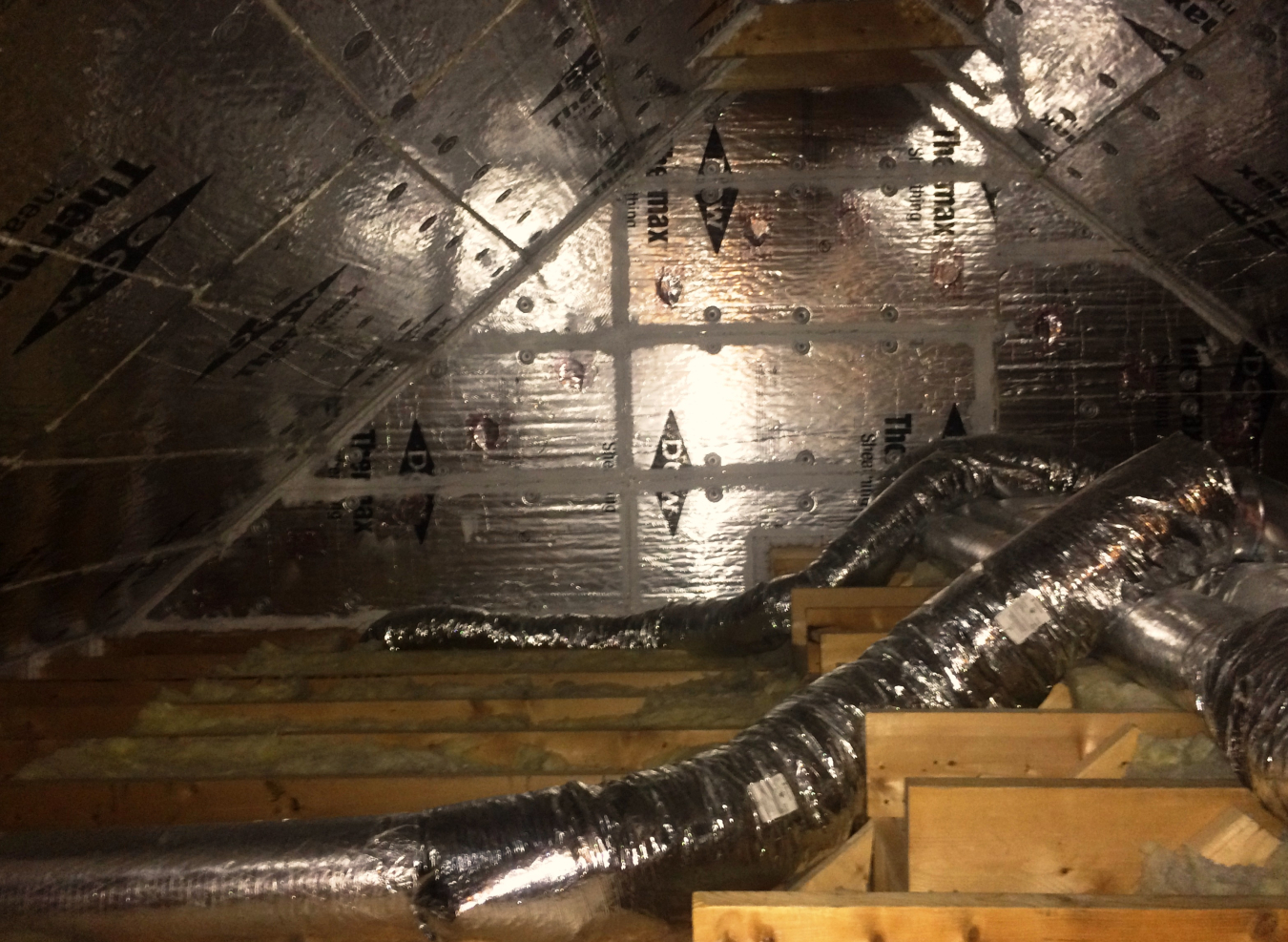Radiant barriers are installed in homes -- usually in attics -- primarily to reduce summer heat gain and reduce cooling costs. The barriers consist of a highly reflective material that reflects radiant heat rather than absorbing it. They don't, however, reduce heat conduction like thermal insulation materials.
How They Work
Heat travels from a warm area to a cool area by a combination of conduction, convection, and radiation. Heat flows by conduction from a hotter location within a material or assembly to a colder location, like the way a spoon placed in a hot cup of coffee conducts heat through its handle to your hand. Heat transfer by convection occurs when a liquid or gas -- air, for example -- is heated, becomes less dense, and rises. As the liquid or gas cools, it becomes denser and falls. Radiant heat travels in a straight line away from any surface and heats anything solid that absorbs its energy.
Most common insulation materials work by slowing conductive heat flow and -- to a lesser extent -- convective heat flow. Radiant barriers and reflective insulation systems work by reducing radiant heat gain. To be effective, the reflective surface must face an air space. Dust accumulation on the reflective surface will reduce its reflective capability. The radiant barrier should be installed in a manner to minimize dust accumulation on the reflective surface.
When the sun heats a roof, it's primarily the sun's radiant energy that makes the roof hot. Much of this heat travels by conduction through the roofing materials to the attic side of the roof. The hot roof material then radiates its gained heat energy onto the cooler attic surfaces, including the air ducts and the attic floor. A radiant barrier reduces the radiant heat transfer from the underside of the roof to the other surfaces in the attic.
A radiant barrier works best when it is perpendicular to the radiant energy striking it. Also, the greater the temperature difference between the sides of the radiant barrier material, the greater the benefits a radiant barrier can offer.
Radiant barriers are more effective in hot climates than in cool climates, especially when cooling air ducts are located in the attic. Some studies show that radiant barriers can reduce cooling costs 5% to 10% when used in a warm, sunny climate. The reduced heat gain may even allow for a smaller air conditioning system. In cool climates, however, it's usually more cost-effective to install more thermal insulation than to add a radiant barrier.

Radiant barriers in an attic with dense-pack insulation and sealed air vents.
Installation
A radiant barrier's effectiveness depends on proper installation, so it's best to use a certified installer. If you choose to do the installation yourself, carefully study and follow the manufacturer’s instructions and safety precautions and check your local building and fire codes. The reflective insulation trade association also offers installation tips.
It's easier to incorporate radiant barriers into a new home, but you can also install them in an existing home, especially if it has an open attic. In a new house, an installer typically drapes a rolled-foil radiant barrier foil-face down between the roof rafters to minimize dust accumulation on the reflective faces (double-faced radiant barriers are available). This is generally done just before the roof sheathing goes on, but can be done afterwards from inside the attic by stapling the material to the bottom of the rafters.
When installing a foil-type barrier, it's important to allow the material to "droop" between the attachment points to make at least a 1.0 inch (2.5 cm) air space between it and the bottom of the roof. Foil-faced plywood or oriented strand board sheathing is also available.
Note that reflective foil will conduct electricity, so workers and homeowners must avoid making contact with bare electrical wiring. If installed on top of attic floor insulation, the foil will be susceptible to dust accumulation and may trap moisture in fiber insulation, so it is strongly recommended that you NOT apply radiant barriers directly on top of the attic floor insulation.
Subscribe to receive updates from Energy Saver, including new blogs, updated content, and seasonal energy saving tips for consumers and homeowners.

